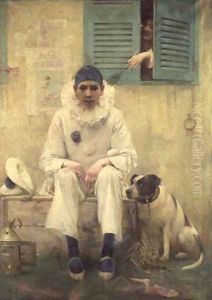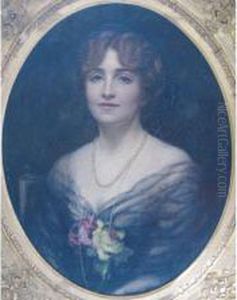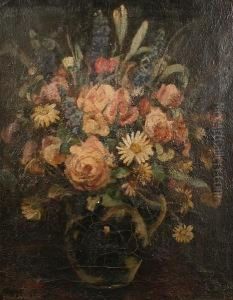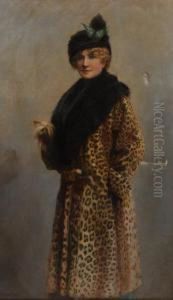Ethel Wright Paintings
Ethel Wright, born in 1866, was a British artist known for her portrait paintings and floral still lifes. She was part of the late 19th and early 20th-century British art scene, a period marked by a diversity of artistic movements and the increasing visibility of female artists, despite the societal challenges they faced.
Wright’s artistic journey began in her youth, showing an early talent for painting. She received her formal art education at the Slade School of Fine Art in London, which was one of the few prestigious art schools at the time to admit women. At the Slade, she would have been exposed to rigorous training in drawing and painting, developing her skills in the academic tradition.
Throughout her career, Wright exhibited her work at various prestigious institutions, including the Royal Academy of Arts in London. Her acceptance and exhibitions at the Royal Academy during a time when female artists struggled for recognition is a testament to her skill and the quality of her work. Wright was also associated with the Society of Women Artists, an organization that was instrumental in promoting the work of female artists in Britain.
Wright's style was characterized by her use of vibrant colors and a refined touch, often portraying her sitters with a genteel elegance. Her portraits were not just mere representations; they aimed to capture the essence of the individual, reflecting the character and status of her subjects. In addition to her portraits, her floral still lifes displayed a similar sensitivity to color and form, capturing the delicate interplay of light and shadow on blossoms and foliage.
Despite her successes, like many women of her time, Ethel Wright did not gain the same level of lasting fame as some of her male counterparts. Following her death in 1939, her work went through a period of relative obscurity. However, in recent years, there has been a resurgence of interest in female artists from the past, leading to a re-evaluation of their contributions to art history. Wright's paintings are now more widely appreciated for their technical skill and the unique perspective they offer on the art world of her time.



